What is the CVV2 on a credit card, and why does it matter
What is the CVV2 on a credit card | So, when shopping online or ordering by phone, you’ve probably been asked for a three-digit or four-digit code found on the back of your credit card. That small number is called CVV2, and although it seems small, it’s a major game player when it comes to safeguarding your financial information. But what is the actual CVV2 on a credit card? How’s it different from other codes, such as CVV, CVC, and CID? Let’s break it down.
What Does CVV2 Stand For?
CVV2 stands for Card Verification Value 2. It’s a credit card security code, a three-digit number printed (not embossed) on the back of Visa and some other cards. This code is intended to ensure that the individual making a purchase actually has the card in their possession.
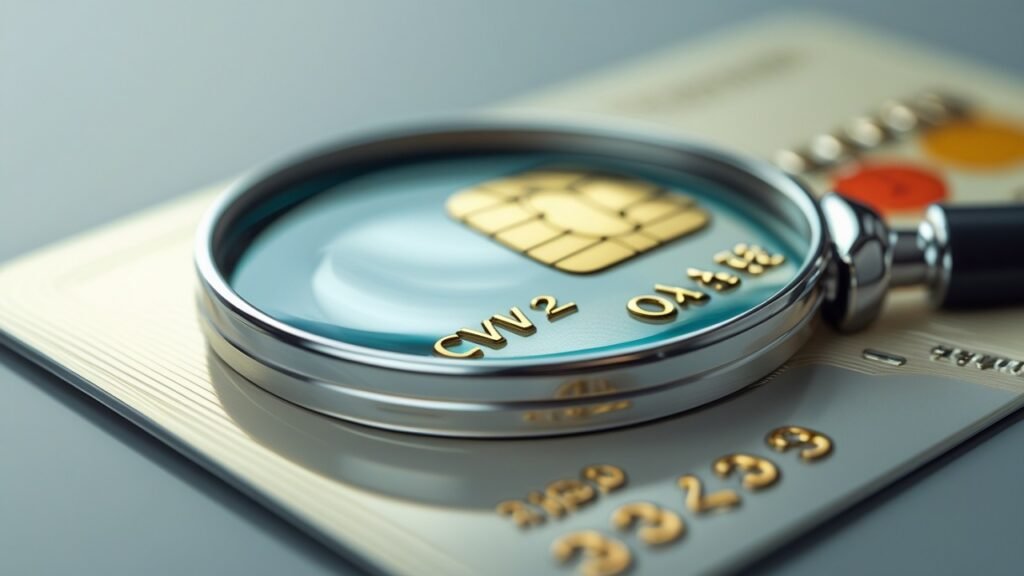
A Brief History of CVV Codes
The idea of credit card security codes emerged in the late 1990s as online shopping began to take off. As e-commerce expanded, so did the need for more layers of fraud protection. The original CVV (Card Verification Value ) was developed as an anti-fraud measure by credit card companies. Visa eventually came out with an improved version, called CVV2, to offer further protection on “card-not-present” transactions, like those made over the internet or by phone.
So when someone says, “What is the CVV2 on a credit card ?” The answer is that it’s a security feature designed to cut down on fraud and make sure that you are in possession of your card at the time of the transaction.
How CVV2 Differs from CVV, CVC, and CID
While these acronyms may seem very similar, CVV2, CVV, CVC, and CID are not the same. Card issuers use different names for such codes and formats, but they all have the same aim: to combat fraud.
Here’s how they differ:
- CVV/CVV2 (Visa): Visa uses the CVV for the number in the magnetic stripe and CVV2 for the printed security code on your card. It is typically a three-digit number on the back of the card.
- CVC/CVC2 (Mastercard): For Mastercard, this code is referred to the Card Validation Code (CVC). Like Visa, it has a magnetic stripe version (CVC1) and a printed version (CVC2) for online and phone transactions.
- CID (American Express & Discover): American Express requires the CID (Card Identification Number), which is a 4-digit number printed on the front of the card. Discover, however, implements a CVV2 code, which is simply a 3-digit CID on the back.
Why So Many Different Names?
Although they all serve the same basic function, verifying the identity of the cardholder when making a card-not-present transaction, each payment network created its own terminology and technical documentation. That’s why the meaning of a credit card security code can differ based on your card.
Whether it’s a CVV2, CVC2, or CID, the result is the same: these codes are crucial for maintaining secure credit card transactions. If you know what the CVV2 is on a credit card, you can use this knowledge to help you keep your personal and financial information safe, momentum that’s especially important when you’re shopping online.
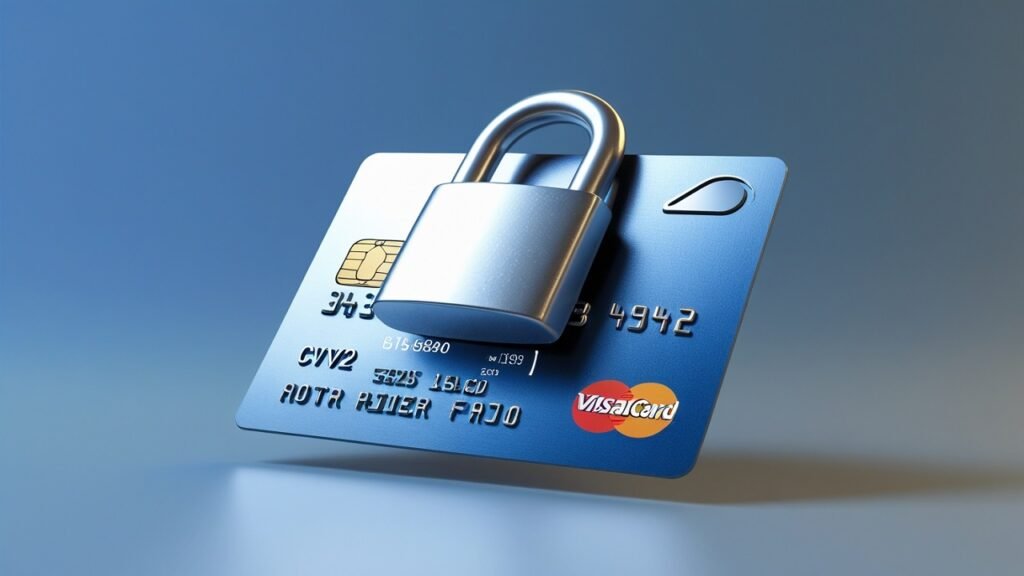
Why the CVV2 Code is Important for Credit Card Security
When it comes to safeguarding your financial data, every little thing about your credit card matters a lot — including the little numbers on your card, known as the CVV2 code. But what really is a credit card CVV2, and why does it matter so much for online security?
The CVV2 (Card Verification Value 2) is the three-digit number that is usually located back of your Visa or Mastercard credit card. This code is not stored on your card’s magnetic stripe or EMV chip. Its primary purpose is to verify that the person making the transaction has the card present, offering another level of security against fraud.
How CVV2 Prevents Fraud in Card-Not-Present Transactions
In the digital economy, we all shop online, make in-app purchases, or place orders over the phone. This sort of purchase is called a card-not-present (CNP) transaction, meaning the cardholder doesn’t actually hand over the card to the merchant. Here’s where the use of a CVV2 makes sense.
Whenever you buy something online or pay using a mobile app, you are frequently prompted to enter your CVV2 code. This small step creates a second layer of verification for merchants to confirm that you are the authorized user. So, if a hacker manages to obtain your card number and expiration date, he won’t be able to purchase without the CVV2.
This renders the protection of the CVV2 particularly effective against unauthorized use. A variety of fraud deterrence and analysis systems are predicated on CVV2 for transaction filtering and flagging bad actors. In other words, the CVV2 code serves as an encryption code to patch a security hole in areas where the usual level of security doesn’t work (like with an EMV chip or PIN).
CVV2 vs. EMV Chip: Complementary Security Tools
It is crucial to note that the CVV2 code and EMV chip are not adversaries — they complement each other in achieving total coverage. One’s better than the other at different things.
EMV chip technology is most effective as a card-present transaction , which would include in-store transactions. It generates a unique transaction code that can’t be used again, which means it is all but impossible for a thief to clone your card. But the chip isn’t useful when it comes to payments you make online or over the phone.
That’s where the CVV2 comes in. In card-not-present conditions, CVV2 is a very facilitating security element. And because that code isn’t stored by retailers or even stored in databases at all as required by PCI compliance, there’s no way for a malicious hacker to capture it, leaving you with a unique way to verify transactions without exposing your full card details.
Thus, if the EMV chip is meant to secure you in retail, the CVV2 protection secures you in cardless transactions on the internet. Combined, they make up a dual security system, bolstering safe credit card use on all purchases.
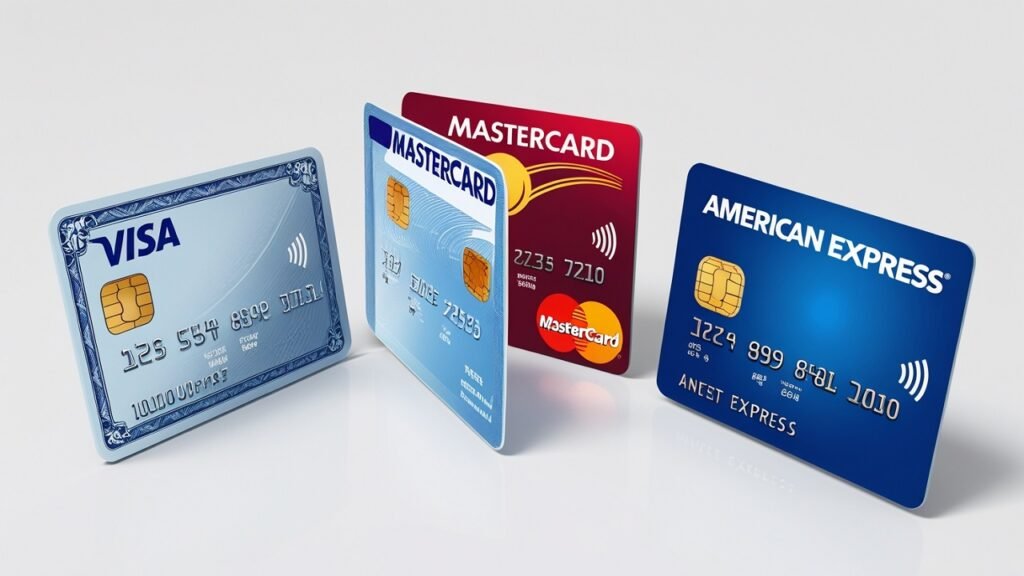
💳 Where to Find the CVV2 Code on Your Credit Card:
You see, when you shop over the internet or on the phone, you’ll often be asked for the CVV2 code from your credit card. But the CVV2 on a credit card — and where you can find it, specifically? Let’s break it down in plain language so you know where to point your eyes, whether you’re using a Visa, Mastercard, Discover, or American Express card.
🔍 Locating the CVV2 on Visa, Mastercard, and Discover
Wondering how to find the CVV2 on a Visa card or Mastercard? Most of the major credit cards, such as Visa, Mastercard, and Discover, have the CVV2 as a 3-digit number located on the back of the card.
More particularly, this security code is commonly
- Situated over or close to the signature panel
- Printed on the right, typically after the last 4 digits of your card number (if not, after the first 4 digits of your card number)
This CVV2 code is an important security feature on your card and is used to help reduce credit card fraud by verifying that the person trying to use the card actually has the card in their possession. Not embossed like the card number, it can’t easily be copied by anyone who skims the card visually or electrically.
💡 CVV2 Placement on American Express Cards:
American Express is a bit different. (If you’re a card-carrying Amex user, your CVV2 won’t be on the back like it is for Visa and Mastercard.) On American Express, however, the CVV2 code is printed as a 4-digit number on the front of the card above the card account number on the right side.
And though that might be a bit confusing for people who are used to using Visa or Mastercard, it serves the same function: it’s an added layer of security to help protect your transactions.
🛡️ Why the CVV2 Matters:
Knowing what the CVV2 is on a credit card can help you stay a step ahead of fraud. This small code is your card issuer’s way of validating that you are in possession of the actual card, and not just using a stolen number. Merchants do not save it, and you generally must enter it anew every time you make a purchase, particularly when you shop online.
| Card Type | CVV2 Location | Number of Digits |
| Visa | Back, near signature | 3 digits |
| Mastercard | Back, near signature | 3 digits |
| Discover | Back, near signature | 3 digits |
| American Express | Front, above number | 4 digits |
So next time you’re asked for that CVV2, you’ll know exactly where to find it—no guessing, no delays.
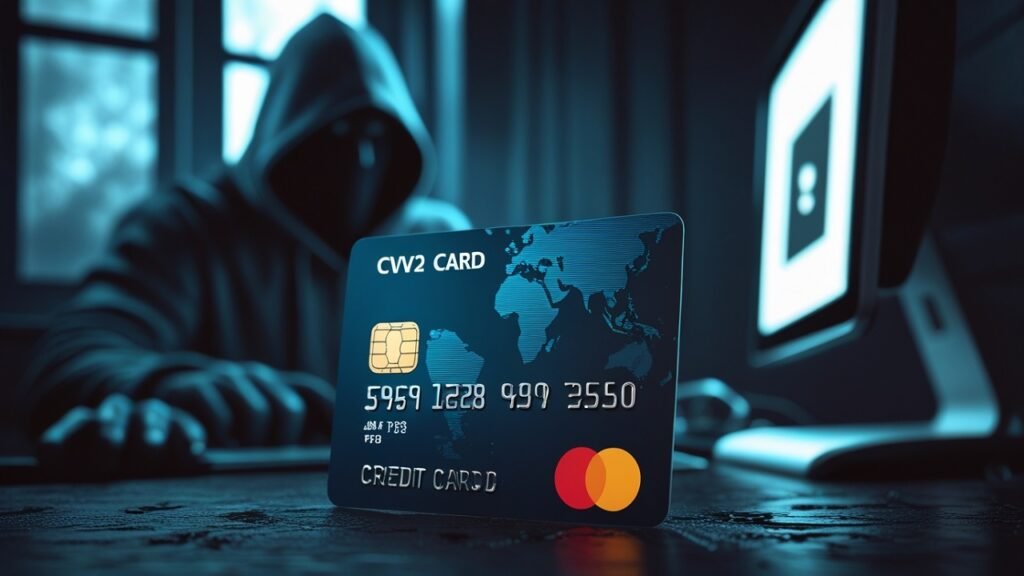
⚠️ CVV2 Code Risks: Can Someone Steal It?
Whether you are shopping online or typing in your credit card details, the CVV2 code (Card Verification Value 2) is an important security feature. The CVV2, which is normally a three-digit number on the back of the card (or four digits on an American Express card), is a key tool for protecting you against credit card fraud.
But, as with all sensitive information, safeguards must be put in place to protect it from theft. So, is it possible for someone to steal your CVV2 code? Unfortunately, yes, without proper security protocols in place, CVV2 codes can be exploited.
Knowing your CVV2 fraud risks and the best ways of managing your CVV2 will help you protect your funds. In this story, we’ll examine the most common ways that thieves obtain and use CVV2S, and you’ll learn some tips for keeping your data safe.
Common Ways CVV2 Codes Get Compromised:
The CVV2 code is not invulnerable despite being a protector. There are several ways that your CVV2 can be compromised, and knowing what the risks are may help you take steps to prevent it from happening to you.
Here are some of the most common ways in which criminals obtain access to your CVV2 information:
Phishing Scams:
Phishing is one of the most common types of fraud. In phishing attacks, cyber criminals send fake messages or emails that look real, such as from recognizable companies. ” These emails attempt to deceive the recipient into disclosing their details (such as credit card numbers with their verification code (CVV)) by giving the impression that a legitimate bank or credit card issuer has sent the email.” The scammers may ask for the information directly or urge you to click on phoney links that would take you to bogus websites designed to steal your data.
Skimming
Skimmers mechanically snatch unsuspecting cardholders’ credit card information by way of small concealed devices that employ a variety of technologies. These devices are usually installed over card readers at ATMS, gas stations, or even store point-of-sale terminals. When you swipe your card, the skimmer gets your information, including the CVV2 code you entered, which can be used to make fraudulent transactions.
Data Breaches
Due to the recent surge in data breaches, CVV2 codes are often stolen from the hacked databases of businesses. Hackers aim at e-commerce sites, banks, and other businesses that keep their customers’ sensitive data. After a breach, a hacker could sell that stolen CVV2 data on the dark web or use it to steal further in fraudulent transactions.
Insider attacks or Misconfigured storage practices
Another threat is from within the organizations themselves. There are the so-called “insider threats:” employees or contractors who have access to sensitive data and use it inappropriately. Companies that fail to store CVV2 data, for example, securely, can also be exposed. The more CVV2 is kept unencrypted or simply available, the more likely it is to be compromised when a cybercrime occurs.
Should You Share Your CVV2? Best Practices for Privacy
While CVV2 codes offer an extra layer of security, it’s important to understand when and how it’s okay to share that info. Is it dangerous to tell someone your CVV2? In many instances, it’s something you will have to do when making real, not fraudulent, online transactions, but only when certain safety checks are in place.
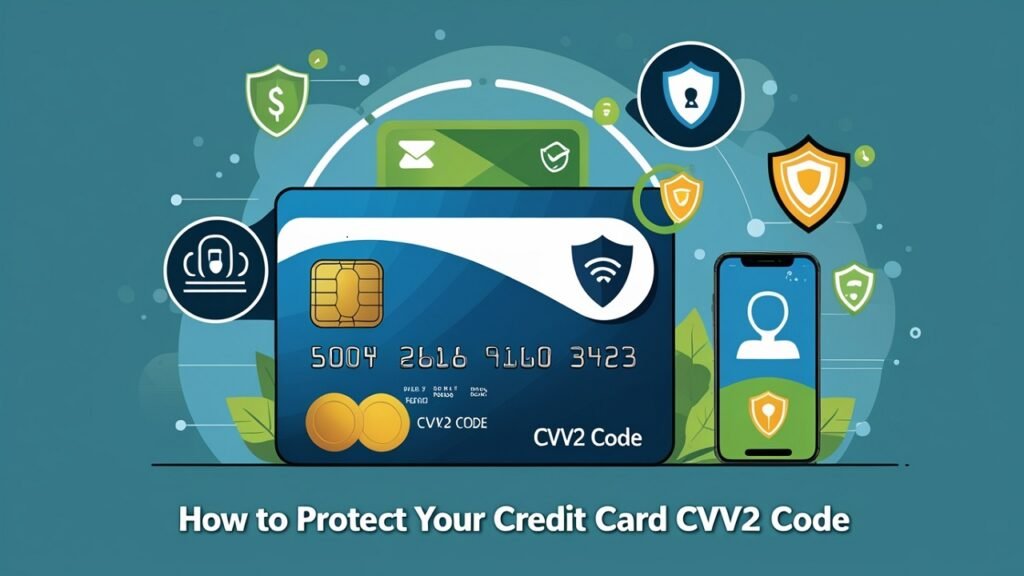
🔒 How to Protect Your Credit Card CVV2 Code
Your CVV2 (Card Verification Value 2) code is an essential component to validate that you are the actual owner of the credit or debit card you are using during online and telephone transactions. But when buying tickets online, you have to provide a secret code that is more important to protect your financial well-being than passwords, yet you are giving it away for free. Knowing how to keep CVV2 safe is a critical step in keeping yourself safe from fraud and identity theft.
Keep reading for experts’ advice on ways to safeguard your CVV2 and what to do if it’s pulled off or otherwise stolen.
Expert Tips to Keep Your CVV2 and Credit Card Safe
- Virtual Cards or Masked Cards can be utilized: One of the easiest methods for keeping your CVV2 safe is by employing virtual or masked cards. A virtual card — a bank- or a credit-card-generated application — creates a short-term card number, CVV2 code, and expiration date over the phone or through the internet to use for online purchase. These single-use cards keep your real card information safe and minimize the risk of fraud.
- Monitor Statements and Set Up Alerts: You need to check credit card statements all the time, really. You can catch any unauthorized charges early by monitoring what you buy. Most financial institutions provide transaction alerts via text or email. By establishing these alerts, you can be sure to monitor your spending and quickly catch any suspicious activity that might signal your CVV2 has been compromised.
- Avoid Sharing Card Details via Email or Unsecured Websites: Never send your credit card information through email or on non-secure websites. Users are frequently duped into typing card details into fake websites or emails. Always verify that the site you are buying from has a secure, encrypted connection (the URL should start with “https”) before entering your CVV2 or any other potentially sensitive information.
What to Do If Your CVV2 Is Exposed or Stolen:
I don’t know if this happened to OP, but if you know your CVV2 is exposed (or that your actual credit card has been stolen), it’s good to act on it early before any damage can be done or worse arises.
- What to Do: Cancel the Card, Report to the Issuer: If your CVV2 is stolen or is otherwise compromised, you must contact your credit card issuer at once. Ask to have your card cancelled and issued a new card with a new CVV2 code. So the thief won’t do more than 1 transaction. Notifying your bank or card issuer is critical to starting a fraud investigation.
- Monitoring for Identity Theft and Fraudulent Charges: Once your CVV2 is compromised, it’s important to keep a close eye on your credit card statements and accounts to make sure you don’t notice any fraudulent charges. You should also think about signing up for credit monitoring. That can help you spot any unusual activity in your credit reports. Also, consider requesting a fraud alert or freeze on your credit to prevent an identity thief from opening accounts in your name.
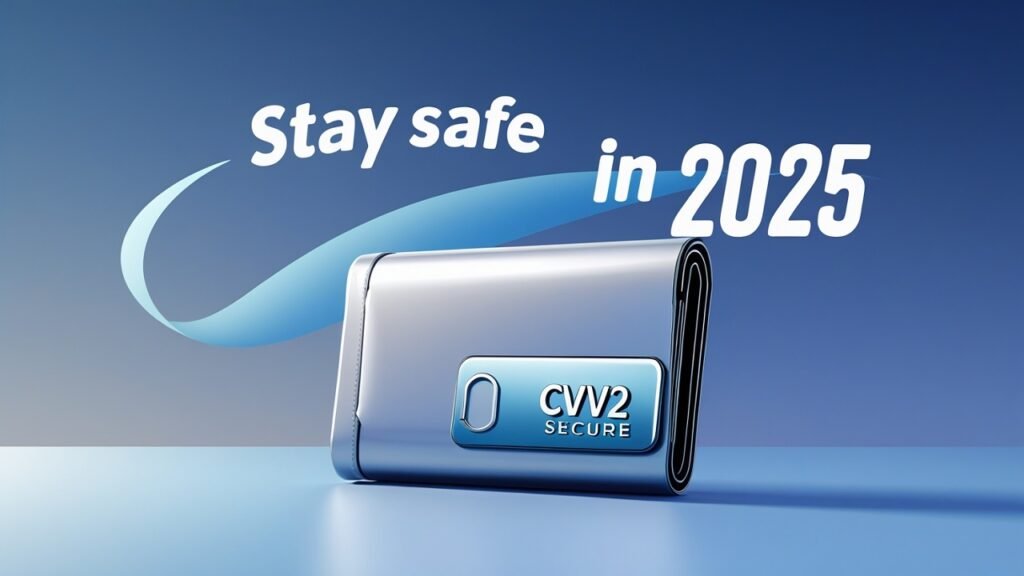
Final Thoughts: Why Knowing Your CVV2 Matters in 2025
In the age of digital living, the protection of your financial transactions has become even more crucial. A critical part of that puzzle is learning the meaning behind the CVV2 (Card Verification Value 2) on your credit card. CVV2 is the three-digit number that can be found on the back of the credit card, near the signature strip. It’s an extra safeguard, particularly for transactions made online or over the phone when you can’t verify your card in person.
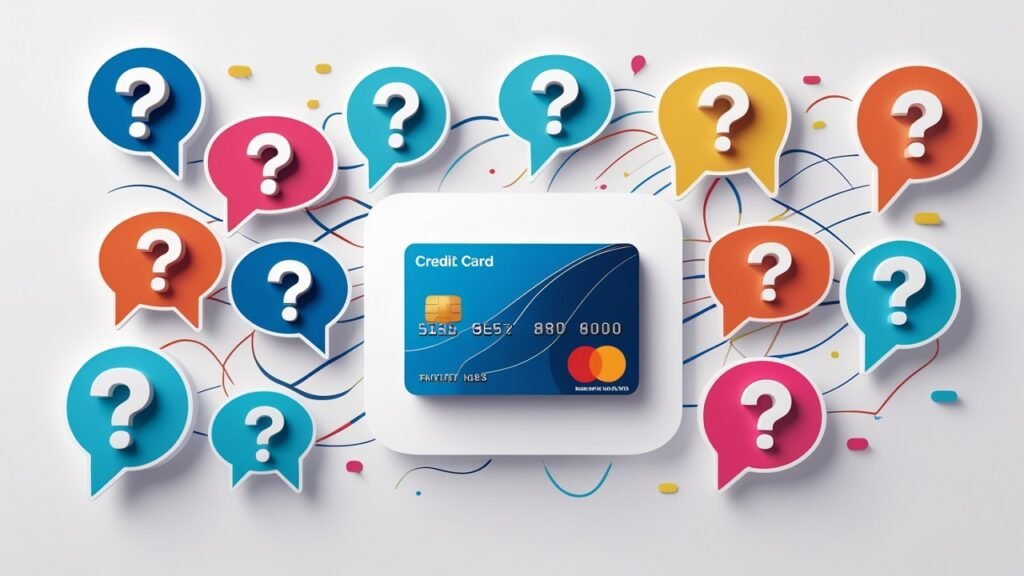
Frequently Asked Questions:
H3: Is CVV2 the Same as the Security Code?
Yes, the CVV2 is, in fact, called the security code on your credit card. It’s a three-digit number on the back of most cards (or four numbers for American Express cards on the front). This code serves to confirm that the person placing an online or Phone order actually physically holds the card in hand. So, while “security code” is a more general term, CVV2 refers to the security code used for this purpose.
H3: Can a Merchant Store My CVV2 Code?
No, mostly due to a stab at fighting fraud, they’re not supposed to. This is a security feature to prevent your card from being used without your permission. Cardholder verification data like CVV2 information is shit that no merchant is allowed to store according to payment card industry standards (like PCI-DSS) to avoid its compromise. Your card number, for instance, can be remembered for easy access, but the CVV2 code is not something that should be remembered at all.
What Happens If I Lose My Credit Card With the CVV2 Code?
In case you lose your credit card, even with the CVV2 code, notify your bank or card issuer straight away. They will cancel the misplaced card and provide a new one to prevent unauthorized activity. The CVV2 helps secure your card, but if someone has your card and the CVV2, they can still potentially make fraudulent transactions. Immediate action reduces the likelihood of economic cuts.
Can You Use a Credit Card Without a CVV2 Code?
However, in some contexts, you may still be able to use a credit card even without the CVV2 code, especially for in-person transactions where the card’s chip or magnetic stripe is used to authenticate the card. However, the CVV2 code is required for most online and phone purchases for extra security. Your payment may be rejected, or the merchant could request additional verification if you don’t have a CVV2.
Is It Safe to Give CVV2 Over the Phone?
While it is safe to provide your CVV2 over the phone, it’s important to make sure you are dealing with a reputable and trusted merchant or service provider. Always confirm that the company is legitimate before giving out any sensitive card information. Avoid giving your CVV2 over the phone unless you are certain that the person requesting it is authorized and that the transaction is secure. If in doubt, always opt for online payment methods where you can confirm the website’s security.





Pingback: Best Credit Cards for travel to Europe | Best Ultimate Guide 2025
Pingback: how to start a photography business| Best Ultimate Guide 2025
Pingback: Sephora Credit Card Review | Best Guide 2025
Pingback: Victoria Secret Credit Card | Best Guide 2025